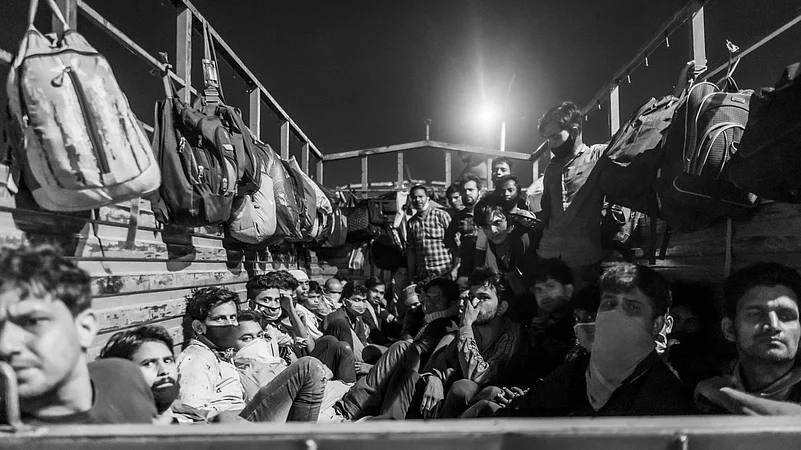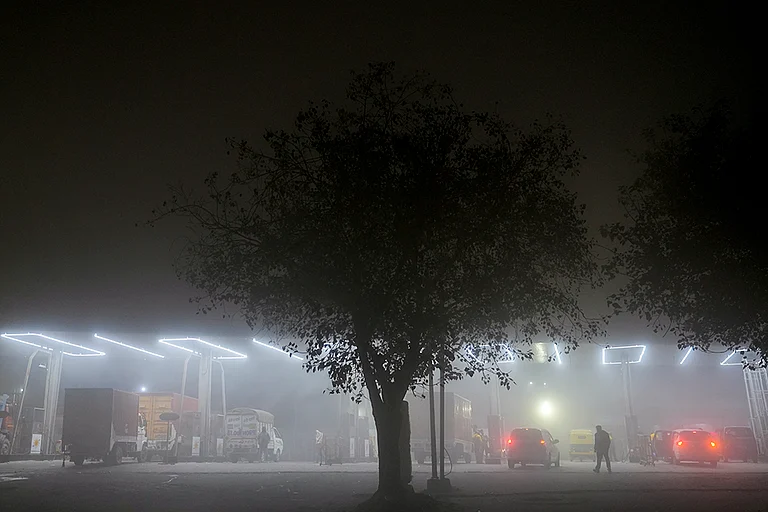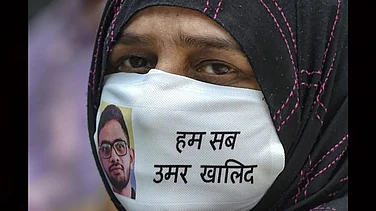Sitting outside his small house in Odisha’s Patamundai, Budhiyaram was slowly pressing khaini with his right thumb. This 74-year-old’s broad and calloused palms bore testimony to a lifetime of working with small hand tools. Budhiya can never forget the 2020 lockdown, when both his sons, Sheetal and Jagat, had to come back with their families, riding bicycles from Hyderabad and Delhi, respectively.
The total population of four blocks in Odisha’s coastal Kendrapara district —Patamundai, Aul, Rajkanika and Rajanagar — is around seven lakhs. Famous for supplying plumbers to the entire country, some 47 per cent workers here migrate to cities in search of work. More than one lakh plumbers from Kendrapara work in Delhi, Mumbai, Kolkata, Hyderabad, Dubai, Abu Dhabi and even London. This migration is reflected in the relative prosperity of Patamundai and its nearby areas.
Locals say that after a devastating flood in 1930, Kendrapara youths were forced to seek work in Calcutta. Working in British construction firms, a whole generation of them learnt the intricacies of indoor plumbing. During 1946-1947, as communal riots and the partition drove out Muslim plumbers from Calcutta, Odiyas completely captured the market. Once a pattern of migration in terms of trades and destinations is established, then generally, the trend picks up.
Plumbing took Budhiya to Delhi, where he worked for decades. This helped him rise above the widespread poverty of rural Odisha and bring up his sons.
By the time he came back to Odisha, once he’d retired, both his sons had found jobs in Delhi.
After 2006, large multistoried housing projects were coming up in and around Delhi, Noida and Ghaziabad. For plumbers like Sheetal and Jagat, such projects provided a stable income and helped them to shift their families too. They were no longer ‘poor’ by the standard of their place of origin. Their remittances took care of their parents’ retired life and even helped to build a small house at Patamundai.

Till the 2020 lockdown, the mainstream economic narrative in India used to be that of the fastest-growing economy of the world. The reverse migration of Sheetal, Jagat and millions like them exposed the deepest fault lines of that narrative. On 22 March 2020, when middle-class India was busy banging utensils, migrants had already started crowding bus terminuses and railway stations. Still, nobody could imagine the extent of this crisis. Amidst multiple and often conflicting government orders, terrible road and train accidents and police highhandedness, a devastating human tragedy played out. The government paid no heed as millions of people took the highways in absolute desperation, at times to walk back 1,500 kilometres or more.
Even at a conservative estimate of around 3 crores, this was the largest internal migration in recent human history. If migration was India’s largest poverty alleviation programme, then this reverse migration was definitely the single biggest burst of unemployment in post-reform India.
Life vs Livelihood
On the Agra Expressway, where we first came across Govind, we also met Jagat. This was in early May 2020. A group of Odiya migrants started off for their homes in cycles. Till the lockdown hit, Jagat was working as a plumber in Ghaziabad (a few years ago, when the real estate market came to a stand-still in Delhi-NCR, Sheetal got a good opportunity and shifted to Hyderabad). Like all others, Jagat and his friends were equally scared of COVID-19 but they did not have any other option.
For the last two decades, as the world was watching India emerge as the third-largest economy, most commentators had no inkling that the employment scenario was so fragile that two-thirds of the urban population would not be able to withstand even a month’s lockdown. Earning between ₹5,000-15,000 per month and without any social security, it was impossible for them to survive in cities without regular income.
Less than 10 per cent of India’s total workforce of 47.41 crore are in the organised sector. Before the lockdown, 52% of them were self-employed and 24% of them were daily-wage earners — they were completely beyond the scope of any social security. Even among the 24% who had a salaried job, more than half were not eligible for a single social security measure out of the four available —Provident Fund/pension, gratuity, healthcare and maternity benefi ts.
Sheetal and Jagat were part of the unorganised workforce involved in non-farm sectors — at times they worked on a regular salary and at times on a daily wage basis. But they never had a formal job contract. In 2018–2019, as many as 68.8% workers who received monthly salaries did not have any contract. Without a formal contract, they were hardly better off than casual workers in terms of social security benefits or job security. In fact, the tendency to employ people without contracts has been rising.

After a decade of steady job creation, unemployment started raising its ugly head since 2011-2012. Not only were there fewer jobs created now than before but there were also serious job losses to contend with. Government data points out that between 2011-2012 and 2017-2018, there was a loss of at least 66 lakh jobs.
Even before the lockdown, with the economy in the grip of a deep structural slow-down, unemployment was the biggest concern. A National Sample Survey Office (NSSO) report — hidden for long before being leaked — admitted that unemployment had risen to a 45-year high of 6.1%. This came at a time when most Indians cannot actually afford to remain without employment of some kind. Not only did the government remain in denial mode but till the reverse migration hit the conscience of the nation, unemployment never really became a national issue.
During the years of highest growth, most non-farm jobs were created in sectors catering to the demands of a growing urban population. Construction (residential, commercial, infrastructure), manufacturing (mostly consumer goods) and trade and hospitality (retail, hotels, restaurants) — these three sectors with 12% share each led non-farm employment. All three sectors were severely affected by this pandemic and lockdown.
Excerpted from Countdown: Can India Rebound from the Meltdown of the Century by Anshuman Tiwari and Anindya Sengupta (Rs 799, pp. 268), with permission from Bloomsbury India
Anshuman Tiwari is Editor of Money9, TV9 Network. He is a highly acclaimed economic commentator, author, policy analyst and an award-winning journalist.
Anindya Sengupta is a public policy analyst and a student of economic history. He blogs at thetimeriver.blogspot.com and bazaarnomics.blogspot.com.





















